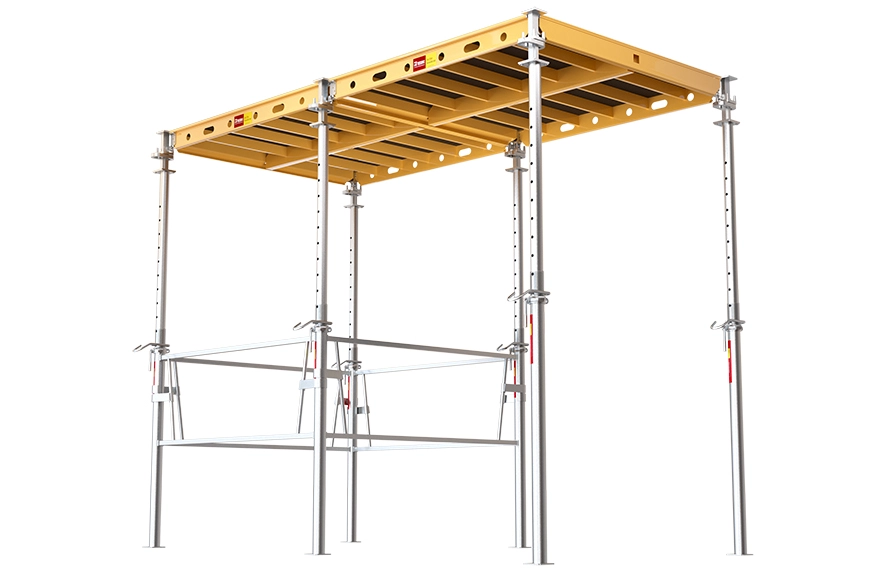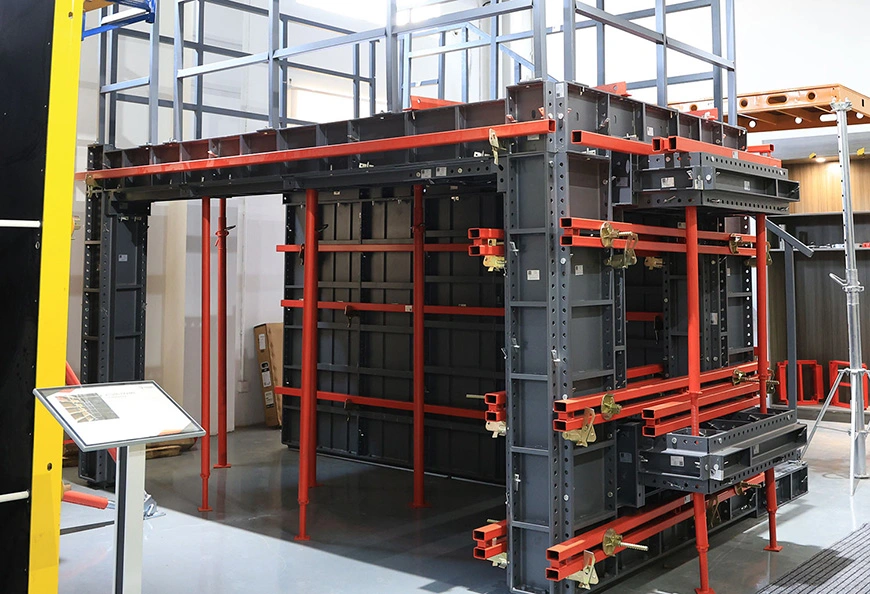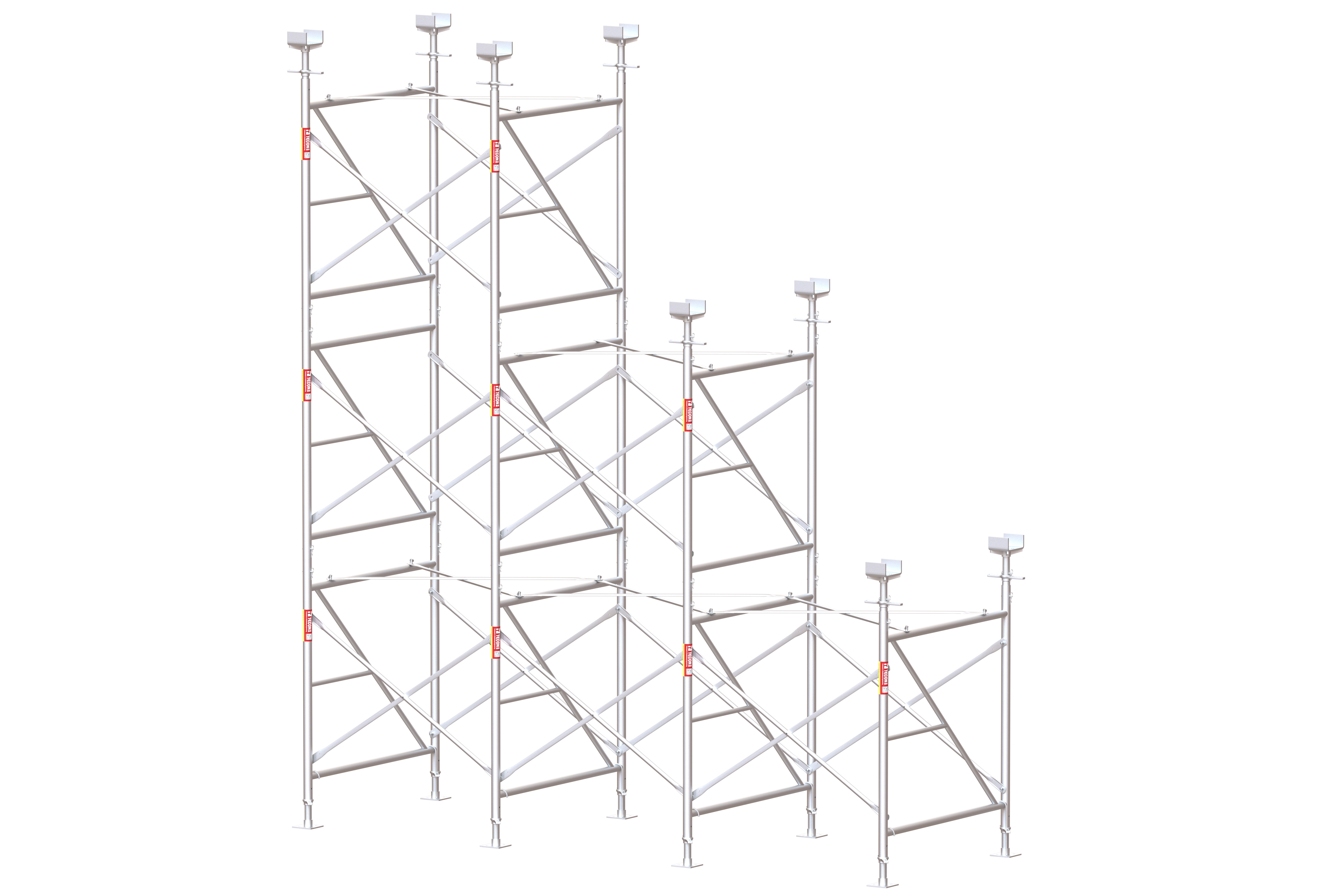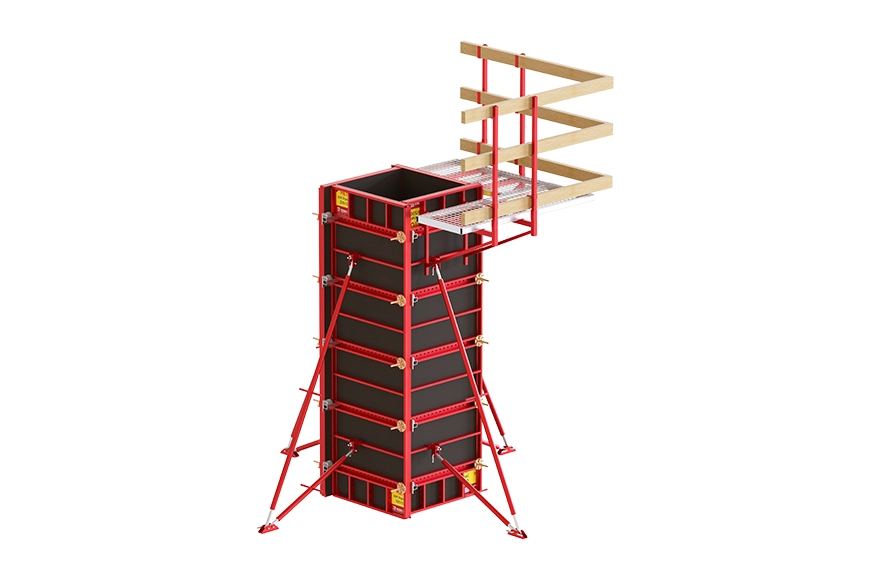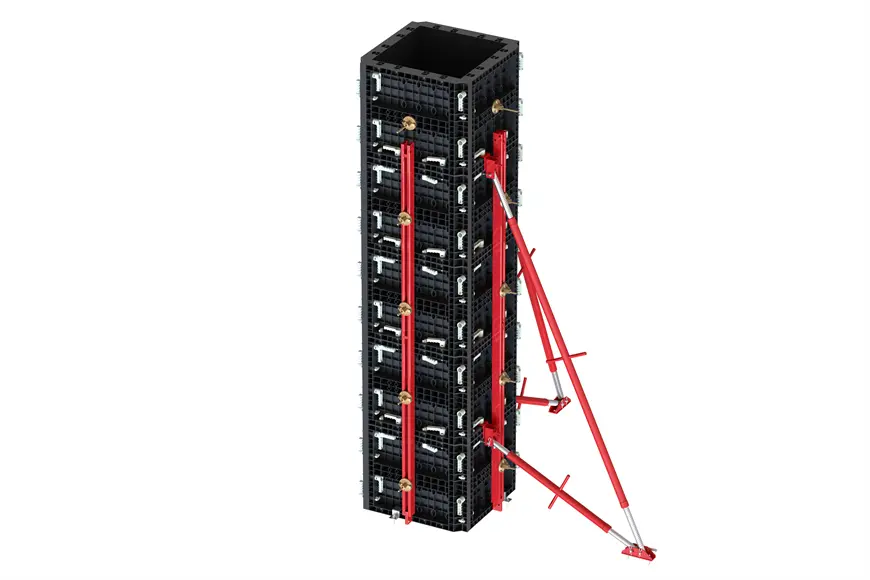The new prefabricated building formwork is made of polypropylene resin (PP) as raw material, adding long glass fiber and other auxiliary materials, and using a molding process to form a plastic formwork at one time.
This formwork can better replace traditional formwork such as steel formwork and wood formwork, and is also an energy-saving high-tech green environmental protection product, which fully reflects green environmental protection, and at the same time has low amortization cost. It is another new generation product after formwork and all-steel large formwork.
According to institutional tests, the physical performance indicators of the new assembled polymer composite template are higher than the industry standard requirements.
1. Save labor and material
Save big workers: It is easy for workers to get started, changing the wood moulding process based on the original technology, and reducing the average unit price of labor.
Save main material: The number of turnover of the template is large, and it should be used no less than 200 times as required.
Save auxiliary materials: The template is designed with back ribs, which has high strength and saves a lot of secondary corrugated reinforcement materials such as square wood and steel pipes.
2. Superior quality
The prefabricated building formwork is of good quality: the formwork has high strength, is not easy to swell, warp, deform, etc., to avoid construction injuries.
The effect of clear water wall is good: the appearance of the concrete wall is good, and the flatness is 3mm~5mm, which saves the cost of plastering.
The corners are well formed: the forming effect of the yin and yang corners is good, and the verticality is flat.
3. Flexible and convenient
Lightweight and convenient: light in weight, can be easily handled manually, and can be directly hoisted when the whole is assembled.
Easy to install: use the handle to rotate 90° to connect and disassemble the formwork.
Flexible assembly: The combined template has complete specifications, and the secondary mold matching is carried out according to different projects, and the universal rate is over 80%.
4. Safety and environmental protection
Civilized and tidy: The construction site is clean and tidy, with less construction waste.
Construction safety: The prefabricated building formwork has high strength and light weight, and there are no large number of iron nails, iron wires and high-risk tools on the construction site, which reduces the construction risk.
Green and environmental protection: The template can be recycled and reused, which is in line with the policy orientation of "replacing steel with plastic and replacing wood with plastic".
It is widely used in walls, columns, beams and slabs in construction projects; subways, pipe corridors, and underpass tunnels in municipal engineering; caps, culverts, and slope beams in railway and highway projects.
Municipal engineering: subway, pipe gallery
Railway and highway engineering: caps, culverts, slope protection beams, etc.
Construction engineering: concrete structures such as walls, columns, beams, slabs, etc.
The construction process of prefabricated building formwork is divided into four stages: preparation, entry, construction, and exit.
When stacking on site, the height of each stack shall not exceed 1.6m.
The formwork stacking site must have clear fire signs and be equipped with fire-fighting equipment.
In case of stoppage in the process of supporting formwork, the supporting top and formwork in place should be firmly connected, and the empty frame should not be floated.
When dismantling the formwork, the operation should be carried out in order, and it is forbidden to pry, hard or roll and dump in a large area.
When the installation height of the prefabricated building formwork exceeds 2.5m, the formwork and materials shall not be allowed to fall freely.
